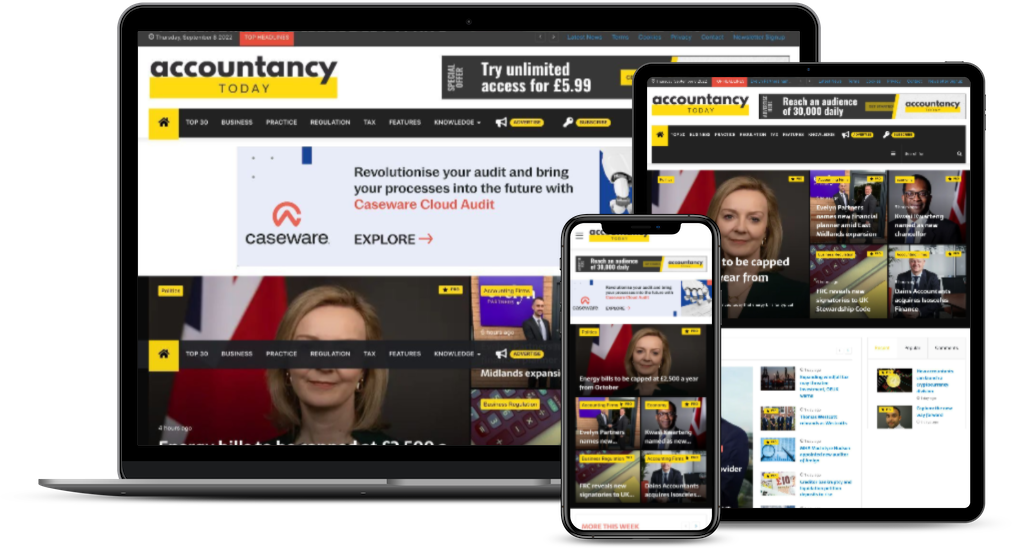
Businesses don’t like uncertainty and, in the UK, they’ve had a bucket load of it.
With the delaying of Article 50, this looks set to continue for at least six more months and no one knows what sort of deal we may leave the EU with, if we leave with a deal at all.
This makes business planning extremely problematic and explains why so many senior executives are holding off on big investment decisions.
But there are some simple steps all businesses can take to future proof themselves against the worst Brexit is likely to throw at them.
And accountants and advisers working closely with their clients have a key role in ensuring they are doing everything possible to prepare the ground for any economic hiccups.
From our experience of working with 14,000 UK businesses across dozens of sectors, helping them innovate and grow, these are the key elements to focus on for future success:
Protect cash flow
Cash is king, as the old saying goes. More than half of businesses fail within their first five years and this is not usually due to a lack of orders but a lack of available cash. It doesn’t matter how long a business’s order book is if no one is paying. Accountants should keep a keen eye on how likely it is that their clients’ cash reserves will run out, causing avoidable damage to the firms’ growth and operations.
There are many options available for unlocking cash, from traditional bank overdrafts to invoice finance providers and other independent lenders. But businesses must also put in place robust policies to ensure they are not too vulnerable to late payment, a worsening problem. Businesses should secure 50% of their fees upfront before undertaking new work and be proactive about chasing late payments.
Find new ways to maximise revenue streams
It is vital to squeeze every last drop of profit from revenues. This money can then be reinvested to fuel further growth. A key way to increase profits beyond sales and operational efficiencies is tax relief in the form of research and development (R&D) tax credits, capital allowances and Patent Box tax relief. Depending on a company’s line of work, it may be eligible for all three.
R&D
Many businesses are eligible for R&D tax relief but do not know it, and that alone can be worth hundreds of thousands of pounds a year to some companies. R&D tax relief can be claimed for a wide range of innovations such as new products, services and business processes in all sectors. If you don’t know whether your clients’ business will qualify, then partner with a tax relief specialist who will.
Capital allowances
Capital allowances can be offset against all the expenses associated with a commercial property such as air conditioning, wiring, heating, lighting and security systems. If you turned a commercial property upside down and let anything not screwed in or bolted down fall out, most of what is left can be used to claim a capital allowance though the rules are complicated. All UK taxpayers that own commercial property may be eligible for Capital Allowances tax relief but eligibility and value of the claim depend on multiple criteria.
Patent Box
Lastly the Patent Box tax relief, introduced in 2013, rewards income made from patents with a reduced rate of corporation tax. Since this is a relatively new tax relief, a huge proportion of companies remain unaware of it and it is the job of accountants to make sure clients check their eligibility.
All these forms of tax relief can significantly boost annual income, providing money which can be used to fuel further business success and smooth out any bumps in the road.
Manage growth
Businesses must grow sustainably and avoid overtrading. This is particularly risky at a time of economic uncertainty when customers are more likely to pay late or even default. Make sure your client businesses carry out detailed due diligence and agree realistic but favourable payment terms. Then work with them to plan for how they will fund the growth, whether that requires new staff, more equipment or more space. They may need to find a trusted lender to unlock capital in order to increase output or re-invest their tax relief income. But this needs to be in step with the size of the opportunity and the market.
All this requires a comprehensive understanding of the business’s financial status and accounts through key planning tools such as cash flow forecasts. With sensible financial planning, you can help clients decide how far to stretch budgets then work with a recommended lender to protect cash flow or unlock capital when needed to grow sustainably.
It may also be worth considering debtor protection which insures a business’s order book so that if customers do not pay their invoices on time or stop trading, the insurer will cover the outstanding debt.
If businesses follow these steps and are careful in forecasting and managing their revenue, they should be able to successfully weather any potential economic turbulence.









